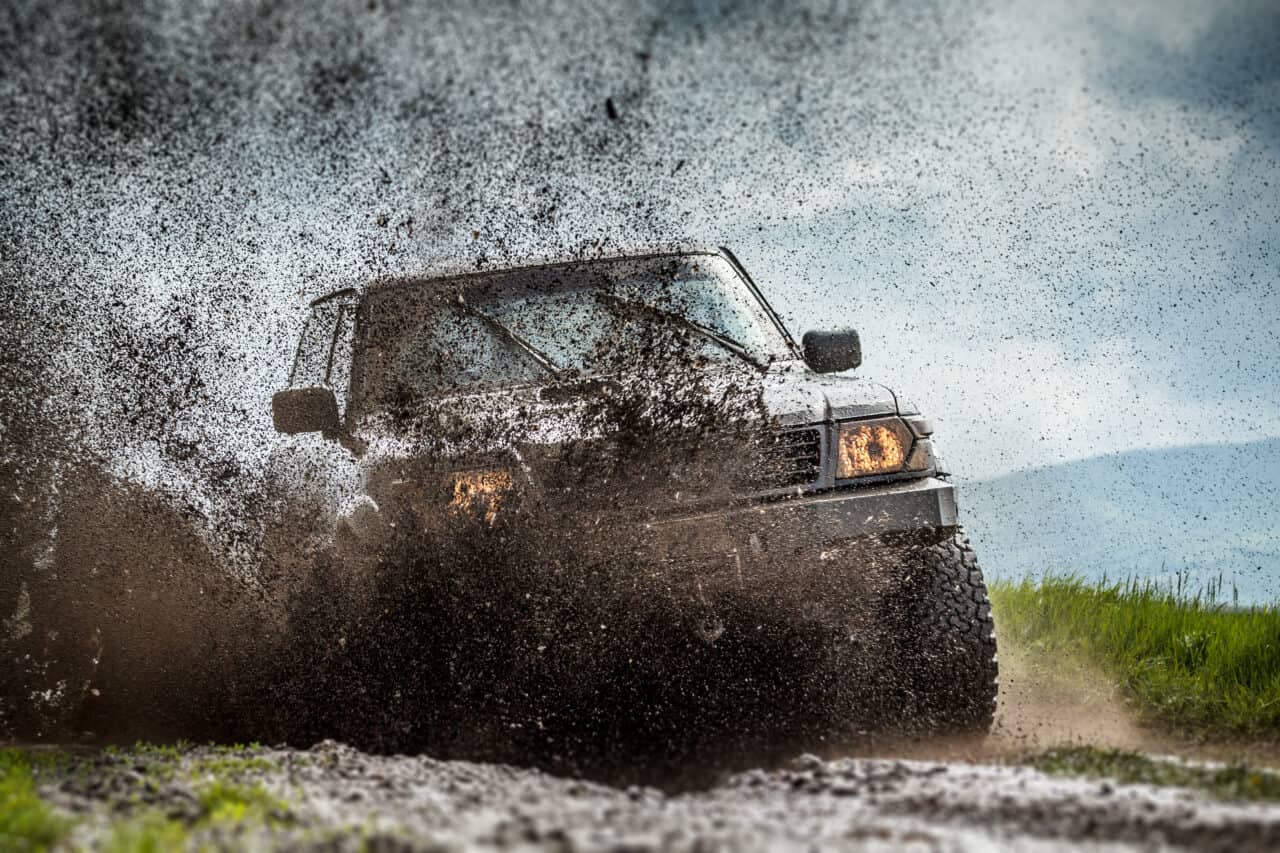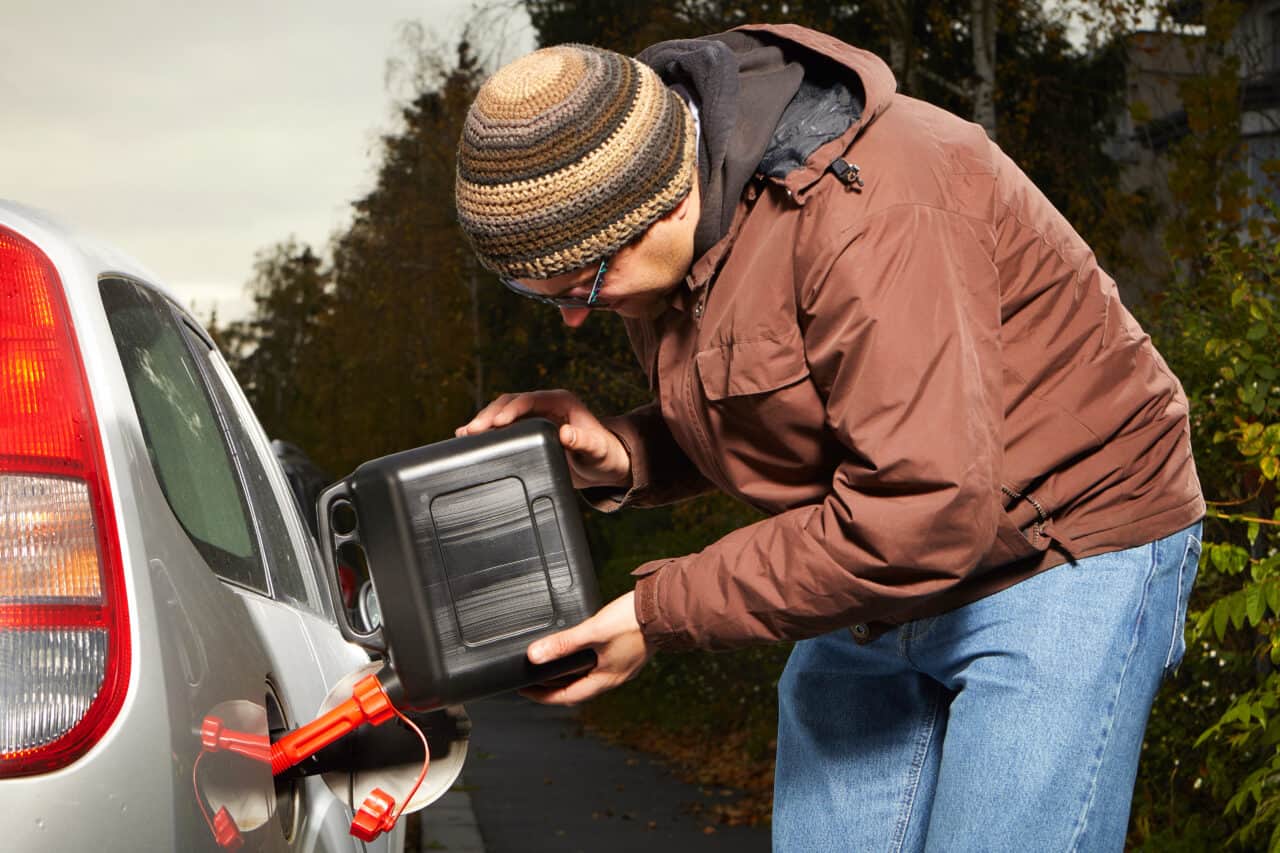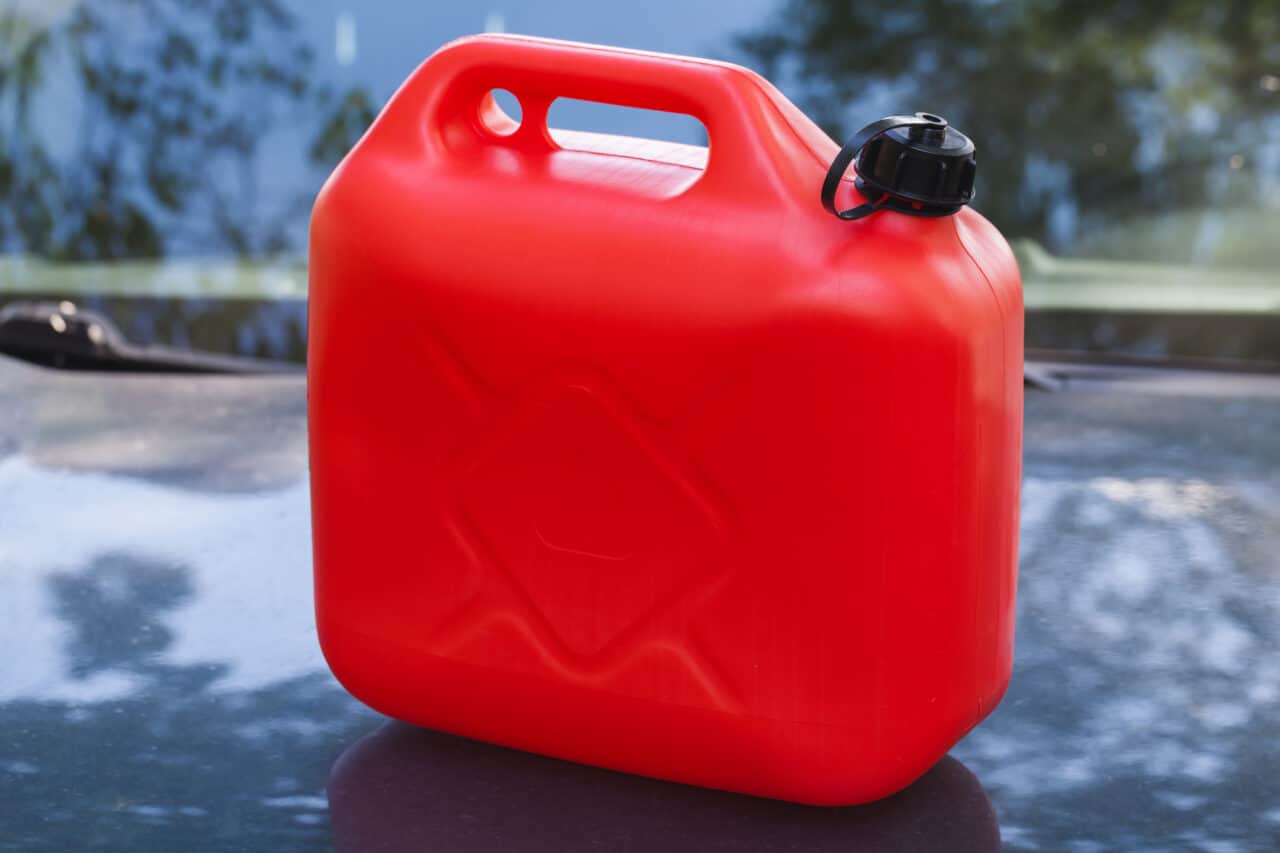How Do You Carry Extra Fuel Off-Road?

Going off-road once in a while is a great way to get out and about. However, hauling extra fuel for the trip can present a safety hazard. So without further ado, here is how to safely haul gasoline!
Extra fuel on off-road trips can be carried by using a jerrycan, sometimes called a NATO style can. Plastic cans are recommendable over metal ones simply because they will flex when impacted, whereas metal cans are susceptible to dents and rust.
While it could be a little scary if done wrong, hauling fuel can be easy as pie if you are careful. Here are a few good things to know.
Ways to Carry Fuel
The first thing to remember when buying gas cans is to make sure they are approved. You can tell if they have been approved by looking for a special symbol on the can. It will either be a UL (Underwriters Laboratories) or FM (Factory Mutual) symbol that indicates whether or not they are safe to use. Using a can that is unapproved could yield disastrous results on your trip. Additionally, you should not use containers that haven’t been designed to transport fuel (such as a milk jug or other kinds of plastic vessels). Those containers are not heavy-duty or spillproof, and they will not contain fumes, either.
Jerry cans are the easiest and most common way to transport fuel for your off-road vehicle. Jerry cans are built with a special nozzle and cap and are required to be sold with a special funnel to be used for ease of filling up your vehicle. Most come with caps that will lock tightly so as to prevent spills and leakage. As mentioned above, it is wise to use plastic containers rather than metal ones.
Metal will rust, and it gets hotter than most plastics do, which increases the risk of igniting the gasoline. Plastic cans are much more flexible and will not become dented when tossed around. Metal cans may still be used on other occasions, but when off-roading, it is generally a good idea to stick with plastic.
There is also the option of using a Cam Can, manufactured by Daystar. These cans are smaller and are meant to be mounted inside the spare tire. These are usually a great option, as they come with a hardware kit designed to help you install the can on the back of your vehicle. Most are fairly durable and meant to withstand severe weather and handling. They tend to be on the smaller side as far as gas cans are concerned, but are still a great option, especially for off-roading.
Another considerable choice is AEV’s fuel caddy. This caddy is designed for installation between the tailgate and spare tire. It can haul about 10 gallons of gas, which is ideal for off-roaders who enjoy long trips. You can survive on most off-road trips with only 5-6 gallons of gas (though it depends on what kind of vehicle(s) you are using), but this caddy makes it possible to prolong your off-roading excursions.
However, because it gets so heavy when filled, it has to stay mounted while you fill the cans up. Using a product like a Super Siphon can make filling these heavy cans easier and safer. These caddies are sturdy and durable and are excellent for hauling a lot of gasoline for several miles.
It is also possible to install a second fuel tank on your vehicle. One of the perks is that your vehicle’s fuel capacity will be greatly increased. On the other hand, however, it is a very expensive venture that is, as a whole, fairly unnecessary since you will only utilize it while going off-roading.
The cost is significantly higher than just grabbing a couple of jerrycans from the store and probably isn’t worth it for most people. Once you have the tank installed you will have to double-check to make sure it is has been correctly done.
You will also have to ensure that your vehicle still meets air quality regulations and passes the smog test. Additionally, you will need to make sure your car has enough ground clearance for another tank.
Do’s and Don’ts

Picking approved gas cans is the first step, but safely transporting the fuel is a whole other story. Here are a few significant do’s and don’ts that everybody should be aware of before hitting the “off”-road.
Storing the gas on your vehicle can be tricky, especially if you have to carry a considerable amount of fuel in addition to other supplies. One thing that should NEVER be attempted is storing the gas inside the passenger compartment. The fumes from the gas will induce headaches and nausea which will make the trip uncomfortable all around. Having the gasoline inside will make potential spills quite problematic, as nobody wants the stench of gas lingering in their car.
Additionally, there are many ignition sources in the car (such as electric outlets) that could spark the fumes and blow the car to kingdom-come. No matter how you slice it, having gas in the cabin of a vehicle is always a safety hazard and should be avoided at all costs.
That being said, you must always carry your fuel cans on the outside of the car. This can also prove to be tricky, however, especially if you are traveling in hot weather.
For instance, it is never a great idea to store your gas cans in direct sunlight, so if you find it to be a particularly hot day, you might want to rethink storing the cans on the roof of your vehicle. There are racks that can be installed on the roof of your vehicle to securely hold your cans in place. This can be a safe method depending on where you’re planning to go, but if possible, it is recommended to store the gas on the back of the vehicle.
Gas weighs a considerable amount (roughly 6.3 lbs. a gallon) and putting too much weight on the roof of your car will severely affect the vehicle’s center of gravity, and possibly affect how your vehicle handles the terrain.
It is usually a good idea to have a fire extinguisher on hand if things take a turn for the worse. You can take every precaution before heading out, but there is always a chance that something could go wrong. At the end of the day, it is better to be safe than sorry.
When your car is not in use, remove the fuel cans from your vehicle as soon and as often as possible, and do the same when you get home. Unload the cans immediately and put them in a shady, secluded area. This will reduce the risks of both theft and fire.
Never, under any circumstances should you leave a gas can in or on your car for an extended period of time, especially when it’s hot out. A gas can that sits in the sun is a recipe for disaster.
Safe Filling and Handling

It is never, ever a good idea to fill a gas can unless it is on level ground.
Do not fill your cans while they are in or on your vehicle. Doing so can trap fumes inside the cabin, causing many of the same problems as storing the gas inside the vehicle. Don’t fill the cans even if they are in the bed of a truck, as it will most likely pose the same risk. In any case, you should always wipe the can clean once you’re done filling it, just to be safe, or it could spread fumes which can then cause headaches, nausea, and potentially a fire.
It is also advisable to turn off your vehicle and let it cool down before refilling. If you are unsure about whether it is safe or not, you can always feel the side of your car. If you get a shock or the metal is too hot to touch, it is probably a good idea to hold off on refilling it until it has cooled considerably.
It is also important that you do not fill your cans near any kind of ignition source. Don’t smoke while you refill and extinguish any flames nearby. You probably would not usually think about this, but making sure your cans are the right indicating color is important too (Red=Gas, Yellow=Diesel, and (usually) Blue/Green=Water).
Siphoning gas should also be done with care, but thankfully there are now easier ways to siphon it rather than using your mouth (not a good idea!). Using products like the Super Siphon is an easy way to get the gas from the can into your vehicle without causing spills or leakage.
Funnels work as well, but they are less spillproof than siphons. It is also good to remember to always fill the cans manually. Using the trigger lock could result in overfilling the cans which not only wastes gas but can create a safety hazard as well.
